Right now I’m doing pour-over coffee. The technique and equipment are a little complex but once you brew a couple of times it gets easy. My main goals with this setup were to avoid plastic as much as possible and get a nice-tasting coffee.
Table of Contents
My Kettle
A gooseneck kettle is a must. You need to have fine control over your pour.
The one I got is pretty cheap. You can find it for around $30 on Amazon: https://amzn.to/3rMEJOB. It’s stainless steel so it’s a yes for me.
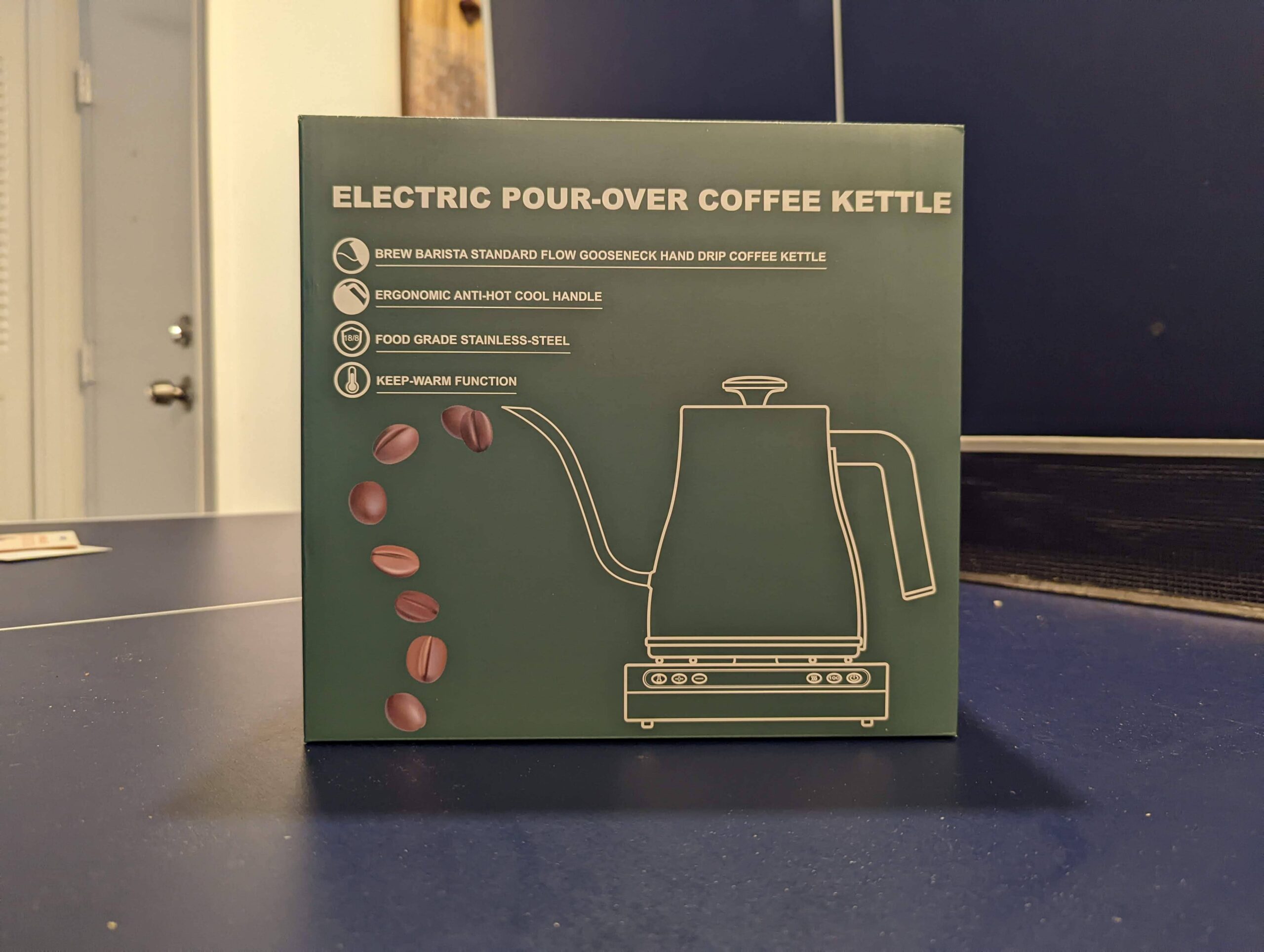
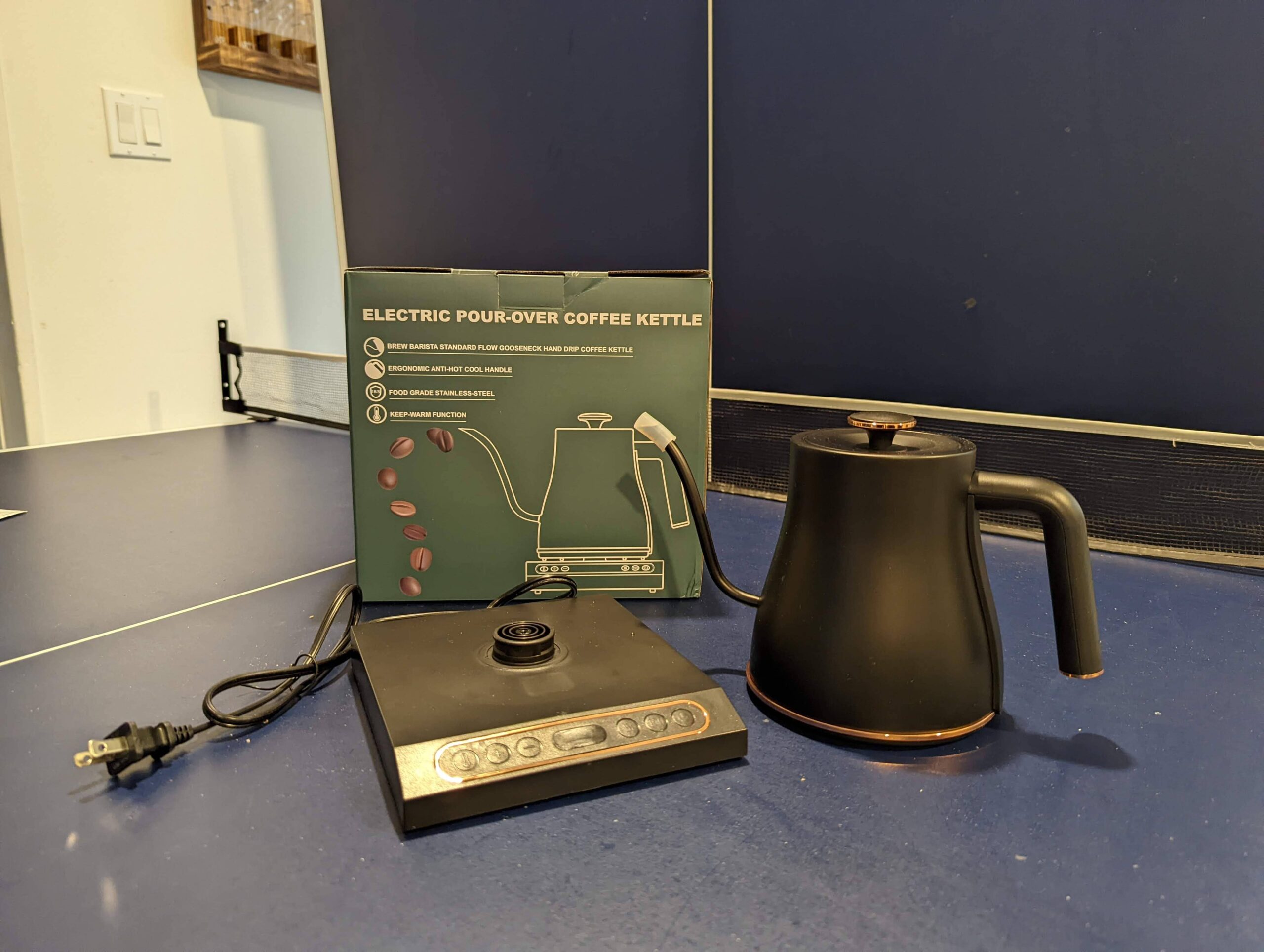
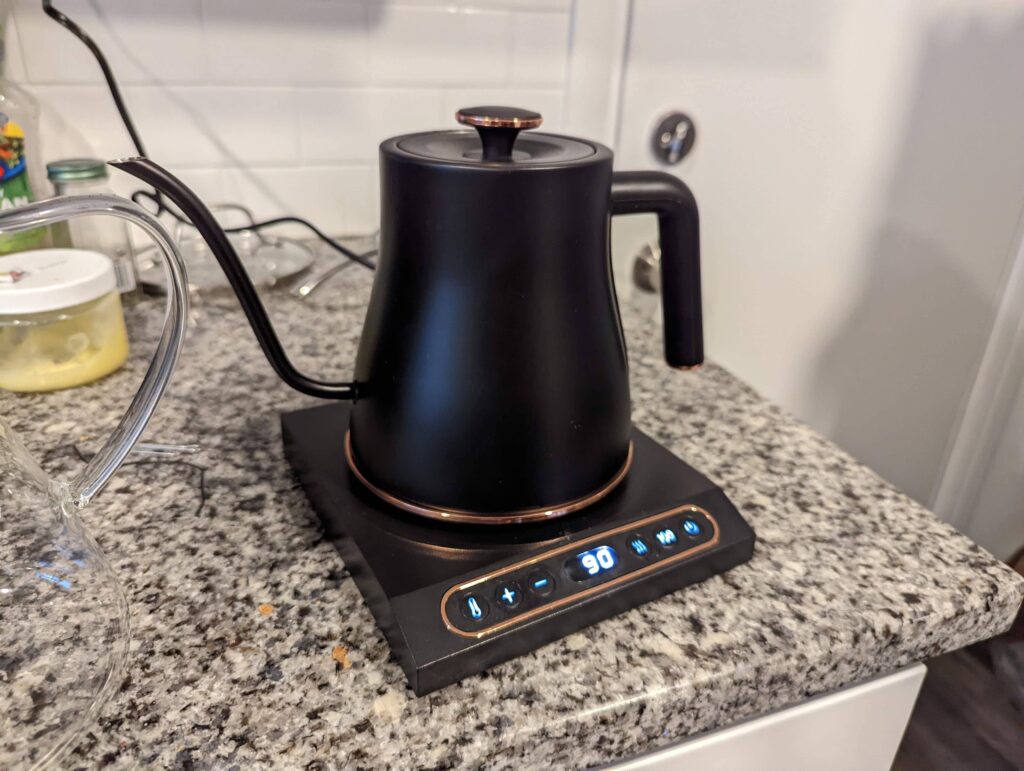
Pour Over Coffee Maker
To avoid plastic with a pour-over cone there are a few options. You can get some kind of reusable stainless steel filter cone, get a ceramic cone, or get a glass cone. I went for a coffee maker that comes with a stainless steel filter.
This is also relatively inexpensive. I got mine on Amazon for about $21: https://amzn.to/36arOgY
It gets the job done and I like to brew a lot at once, so this was a good option for me. Those single-cup brewers can be nice if you don’t drink a lot of coffee.


The grinder
This is what I think is the most important component. If you’re going to splurge on your setup do it in this category. Consistent grinds are very important. The granularity in your grind is going to have a huge effect on the taste and brew time of your coffee. Don’t go cheap here.
I went for the 1Zpresso JX Manual. You can get it on Amazon here: https://amzn.to/3GKLhkZ
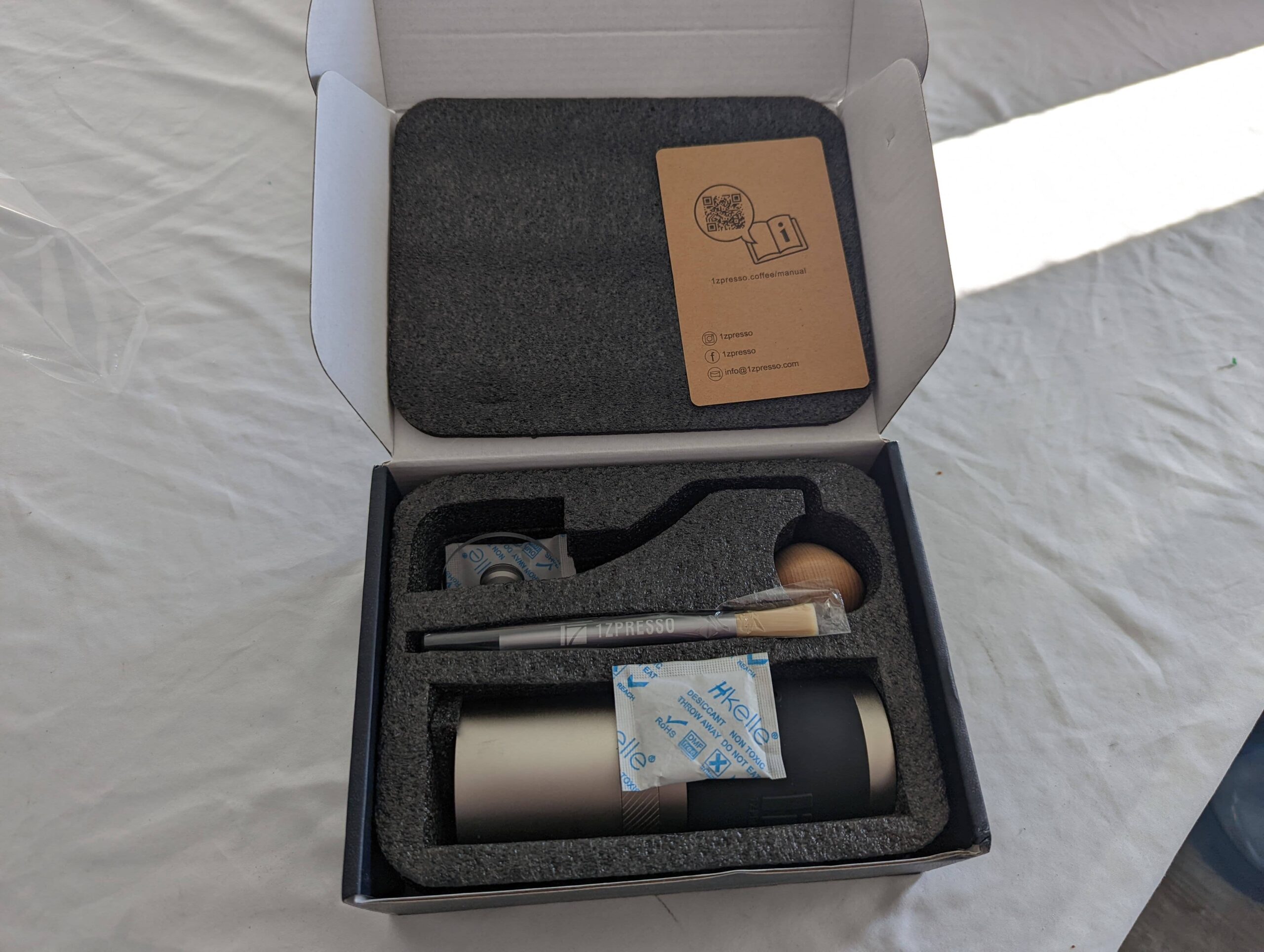
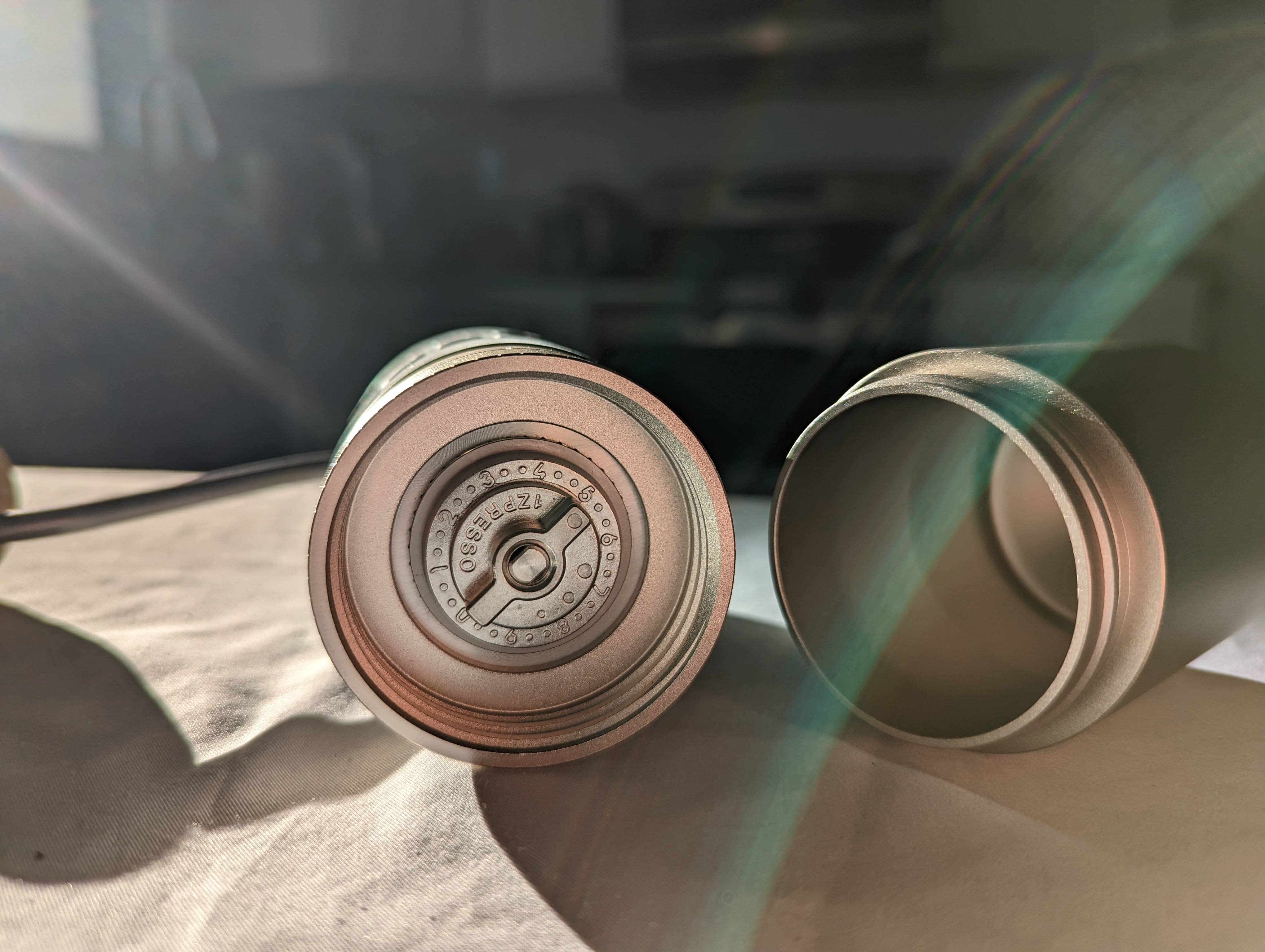

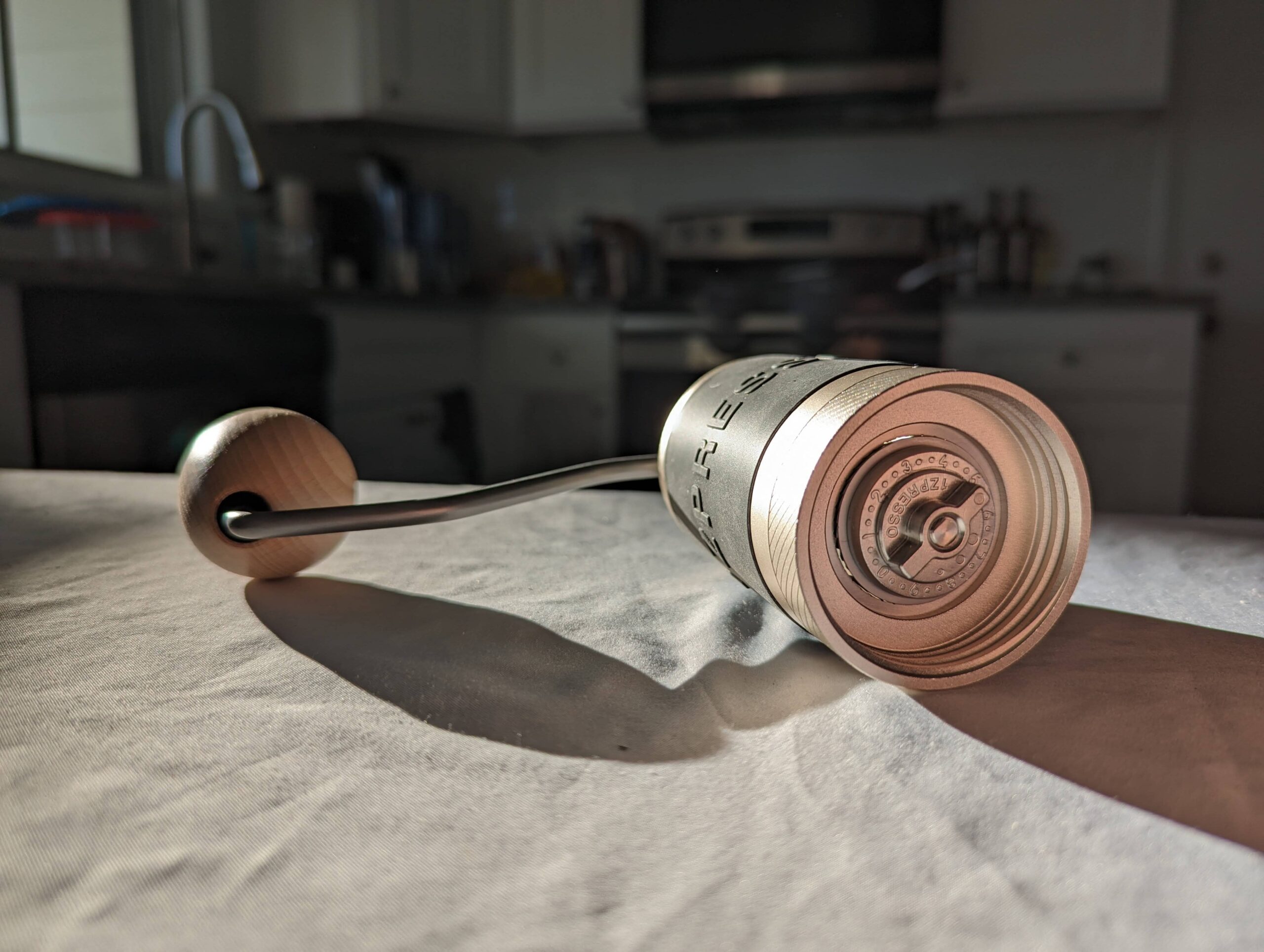
If this is out of the budget for you then this TIMEMORE Chestnut C2 at around $80 would be my second choice : https://amzn.to/3gFbsiv
If that’s still too high a Hario Skerton would probably be the cheapest one coming in at around $40 : https://amzn.to/3uLRo6m
Please avoid the cheap electric blade grinders. You’ll have a tough time getting a consistent grind.
Grind settings
The user manual is here: https://1zpresso.coffee/manual-j-en/. Right now I’ve been using 25 clicks or 2.5 rotations from 0. On the chart that is right where pour-overs are:

Bean Selection
This is another large factor in what kind of coffee you’ll get out of your setup. If you have a bad quality bean you’re probably not going to have a great cup of coffee.
I suggest you pull up google maps and look up coffee bean roasters near me. Make sure you sort by distance and go talk to the roasters. Talk to them about your preferences and they’ll be able to get you a bean that you’ll enjoy.
Asking the roaster what kind of water they recommend is a good question. Water can affect the taste of your coffee. Using similar water will help you achieve the same flavors that they describe on the package.
Coffee shops are another good option because they’d probably let you taste test a couple of beans before you buy a whole bag.
If you want to go deeper James Hoffman has a good video on this topic. I tend to watch his videos at two times speed because they feel a little slow. But he’s a great resource for all things coffee. Check it out:
Another good video I found is by FlavCity:
How much coffee should I be using?
Get a scale! If you don’t already have a kitchen scale you should really invest in one. They’re a great tool. I prefer it to almost any other form of measurement. You can’t beat it.
If you’re making a recipe you can just set the bowl on top of your scale, tare, and throw your food in and don’t have to worry about cleaning any measuring cups or spoons.
Scale Recommendations
I use the great value Walmart version of this scale for my food. Here’s the same version but branded by Amazon: https://amzn.to/3HLSjY7 .
But if you want something for coffee specifically that is more accurate, a roaster I talked to recommended a scale like this: https://amzn.to/3oGlzrp
Coffee Calculators
I’ve found two that are pretty useful.
The first one is here:
https://coffeelikeapro.com/coffee-to-water-ratio-calculator
This one is pretty good but I’ve found that my grounds absorb a bit of the water when using this calculator so using 711 mL of water will not actually yield me 711 mL of coffee.
My second recommendation takes into account some water loss:
https://goodcalculators.com/coffee-to-water-ratio-calculator/
You will have to play around with your measurements and find how much water you lose to your grounds and go from there.
Technique
But where do I learn how to pour my water on my coffee? I think this video by Onyx is pretty good, if you want to make a large batch of coffee:
If you want to make a smaller amount of coffee check out James Hoffman’s Ultimate V60 technique:
Conclusion
Too much plastic!
It’s everywhere now and almost impossible to avoid but we can only try our best. If you’re too lazy to go through all this trouble a French press is another method that is much easier than this.

